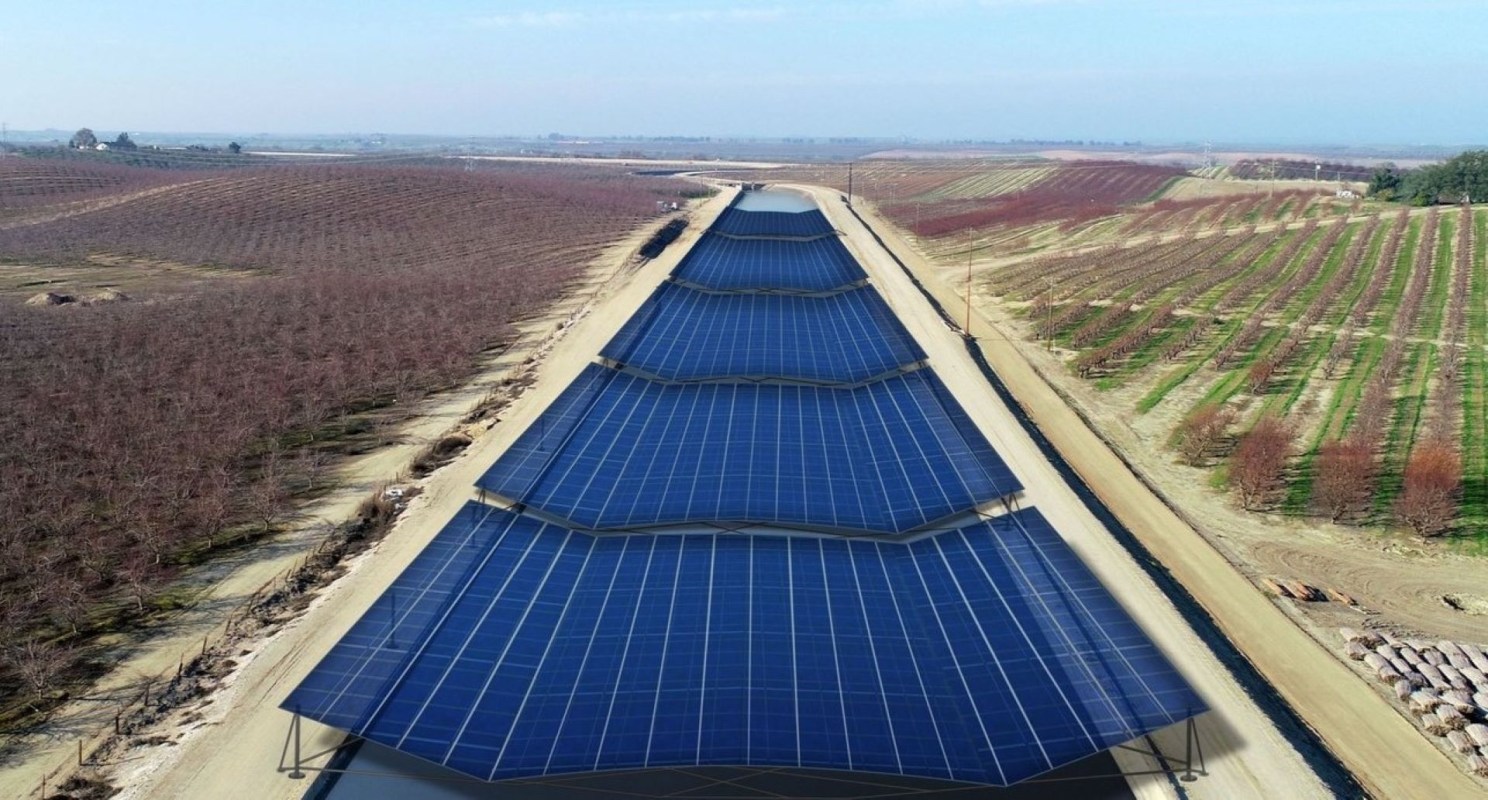California is covering irrigation canals with solar panels to combat severe droughts while creating cleaner, cheaper energy for the state.
The $20 million smart solar panel project, dubbed Project Nexus, is being built over three sections of Turlock Irrigation District (TID) canals, located about 90 miles southeast of Sacramento. The project is being spearheaded by Solar AquaGrid, which has partnered with Citizen Group and TID.
Project Nexus, which breaks ground this fall and is estimated to be completed by 2024, is the first project of its kind in the U.S., and its developers say it could serve as a model for the rest of the country.
The panels will span about 8,500 feet over three sections of the TID canals and are expected to help the state combat drought conditions by reducing water evaporation while also generating cheaper renewable energy.
The project also has the benefit of reducing some of the state's reliance on dirty energy sources, the burning of which contributes to the overheating of our planet and the worsening droughts the state has grappled with.
According to a 2021 study from the University of California, Merced, if California covered the approximately 4,000 miles of public water delivery system infrastructure in the state, it could save 63 billion gallons of water per year — enough to meet the residential water needs of more than two million people — and offer residents energy savings as well.
TID says the panels will increase renewable power for the state and can also increase vegetation along the canals. So the project aligns well with California Governor Gavin Newsom's 2030 target for the state to source 60% of its electricity from renewable sources.
Another plus to this type of system is that it enables California to benefit from solar power without disrupting any additional land.
"Solar canopies over canals avoid the development of large tracts of land that would be required for ground-mounted systems. If we use canal infrastructure, that's already disturbed land," Brandi McKuin, lead author of the study and project scientist with UC Merced, told the Hill.
Join our free newsletter for cool news and actionable info that makes it easy to help yourself while helping the planet.









